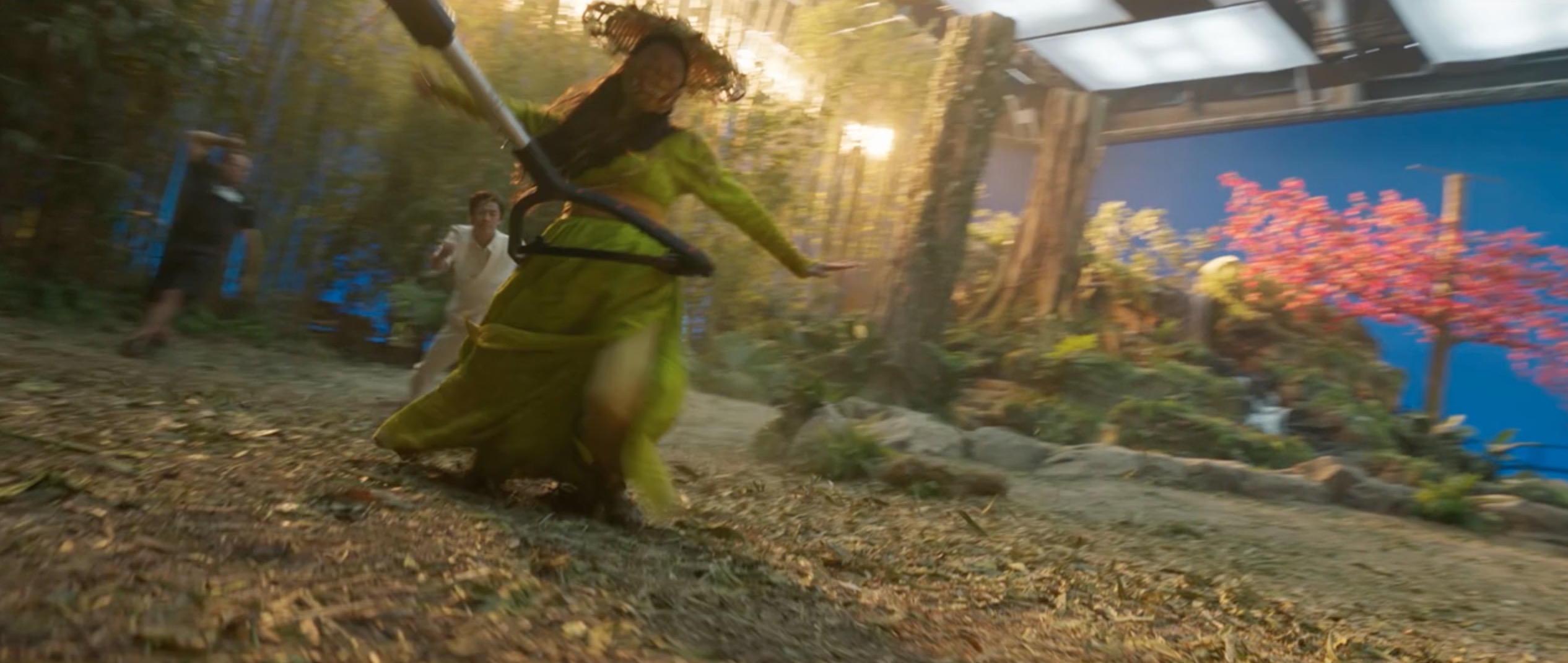Scanline VFX on making Kong a little more world-weary.
In Godzilla vs. Kong, the two creatures first cross paths while Kong is being transported by sea via a flotilla of ships. Godzilla attacks the aircraft carrier and transport ship convoy, and the two creatures engage—sometimes right on the deck of the ships or even by jumping between ships—in the middle of the ocean.
Behind that sequence was Scanline VFX, which had also re-built a new Kong asset for the film. Visual effects supervisor Bryan Hirota breaks down the sequence for befores & afters.
A new Kong




Bryan Hirota: We started with the Skull Island Kong that ILM had built. The new brief was, ‘We want an old man Kong who’s bigger, has a beard, a little bit of gray and just seems a bit more world-weary. So we approached him like a big kind of biker guy. We wanted him to be very muscular, but not super fit. We kept all of the scars that he would’ve gotten in Skull Island, added a few other scars to his skin, imagining he had other interesting battles in between that movie and this one.
Knowing that he had to emote quite a lot in this new film, we rebuilt the eye asset to make the physiology as correct as possible so that we could make his emotions come through his face. We just wanted to make sure the animators and lighters had as much ability as possible to make Kong emote.
Animating Kong




On almost all shots, our animation supervisor, Eric Petey, actually performed most of it in full body and facial capture. We did a full body and Faceware facial capture together for the majority of the shots that we did, because we wanted to have a real base. There’s always, of course, some kind of retargeting and keyframing you need to do, just because of the physiology being different. Eric would shoot a bunch of takes, and then I’d sit down with him, and we’d make selects. From there, we’d clean that up and hand that off to the keyframe animators.
We gave Kong a full anatomy with muscles. We implemented the Ziva FEM solver to give the musculature volume and allow the muscles to fire and then sim the skin on top of that. And then we had a fur sim on top of that that would react to the wind, and we set up various scenarios for whether it was wet, dry, blowing in the wind or matted down (Kong has 6,358,381 hairs that required simulation).
Getting started on the ocean scenes



There was previs done, and then we started these scenes by laying out the general action. We’ll put in what the right assets are, everything at the right scale and make sure that, in as much as everyone can commit to it, the general action that the creatures and the ships and the cameras are doing are what people want.
Sometimes in the previs it might not all logically make sense because they might’ve swapped shots or changed the order. So we try to put together a master overview of a sequence like that, to keep track of where destruction might need to be seen in front of camera, or for the layout of the ships, to make sure that the orientation of the fleet or where the ships are going is plausible in terms of all of these events being able to take place.
Simulation is key
We’d get blocking approval from director Adam Wingard and from editorial, and then we’d refine the animation within the approved blocking. And once the animation was approved, we’d start working on simulations on the big things first, and then move down to the smaller things. The big things would be, say on a shot where Kong’s climbing out of the ocean and the transport ship is flipping over, the biggest thing in that shot to me would be the transport ship’s interaction with the ocean.
The way the simulations are broken up, different departments tackle them. The Flowline department is attacking the ocean, while the creature department is sim’ing Kong’s muscles. And once Kong’s muscles and skin are approved, then the fur department takes over and starts working on that. Then once the fur is approved, the Flowline department picks that back up again and does the water off of Kong.
Check back later for more on Scanline VFX’s work for the film, including the making of Mechagodzilla.
All images copyright: © 2021 LEGENDARY AND WARNER BROS. ENTERTAINMENT INC. ALL RIGHTS RESERVED. GODZILLA TM & © TOHO CO., LTD.




























